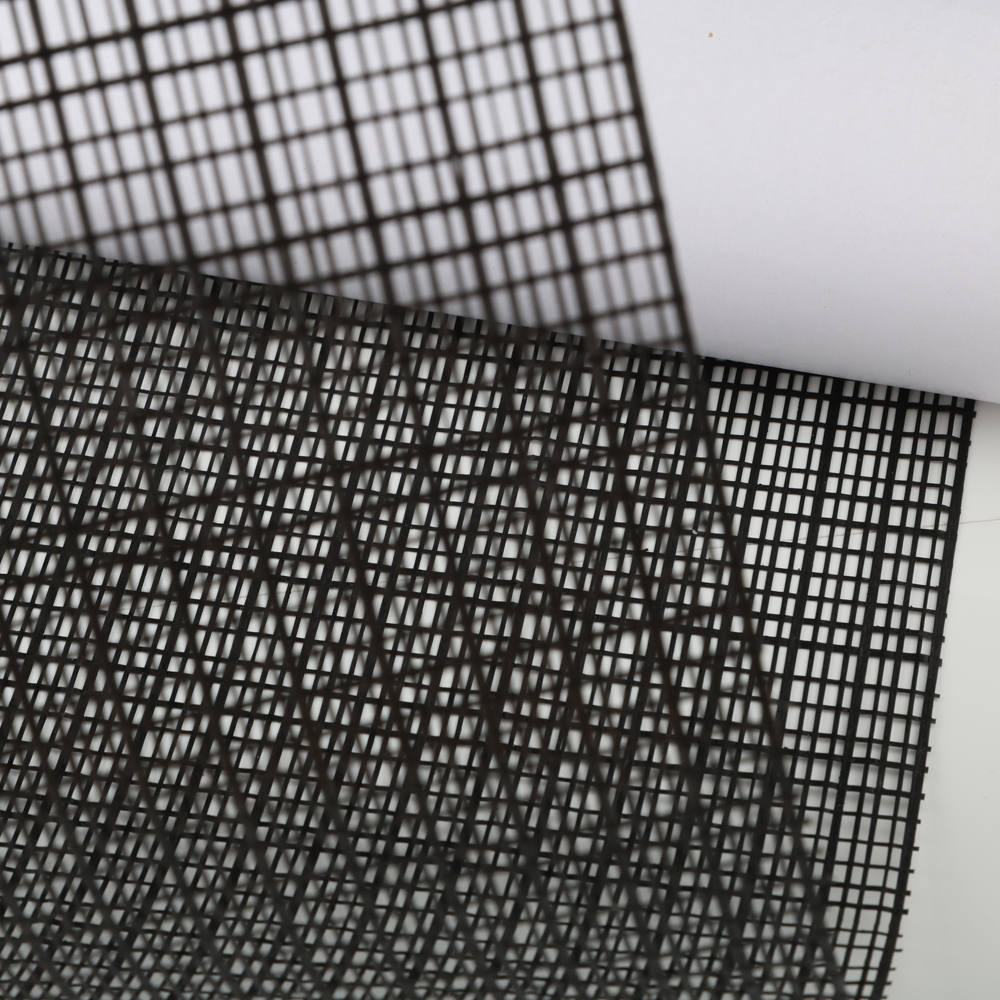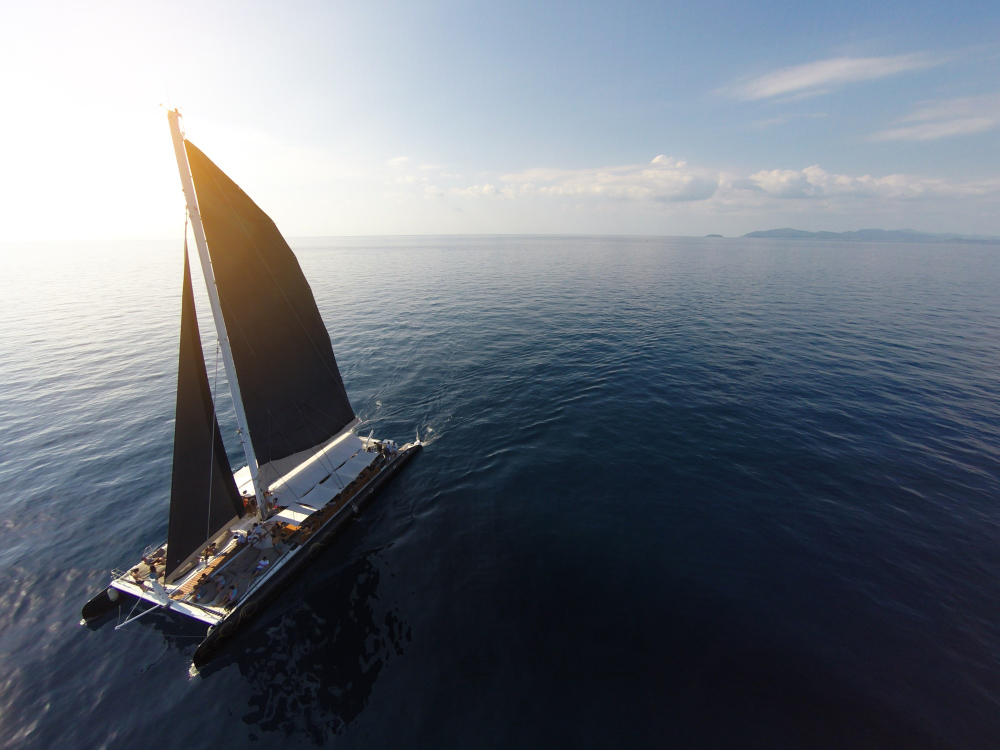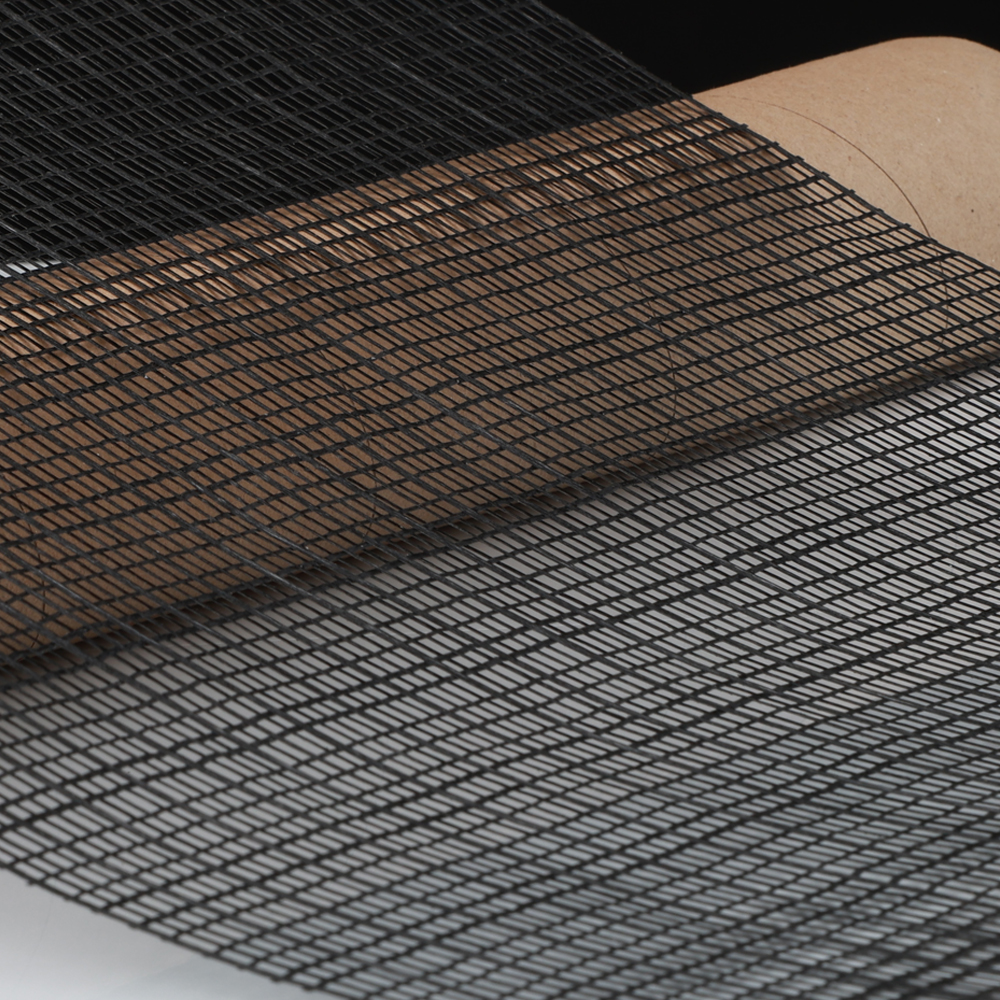Sailing places intense demands on materials. Sails and other gear must withstand powerful winds, sunlight, and saltwater while remaining lightweight and easy to handle. One unsung hero in modern sailing materials is polyester laid scrim. In this blog, we will explain what polyester is and how it’s used in sailing applications.

What is Polyester Laid Scrim?
Polyester laid scrim is a lightweight, non-woven reinforcing material composed of polyester fiber, prized for its strength-to-weight ratio and adaptability across industries. While being a mesh, polyester scrim itself is thin and almost transparent, which is why it is often laminated between other layers to create a composite material. In sailing applications, you might not notice the scrim at first glance, but it is likely hiding inside your sail or canvas, providing a skeleton of strength. It provide different levels of reinforcement due to the fact that it is laid not woven in the traditional sense, which means the fibers stay straight and can align in specific directions needed for strength.
How Scrim is Used in Sails

Modern sails often use laminated sailcloth reinforced with polyester scrim to stay strong and hold their shape at the same time. Traditional woven sails rely on the weave of the fabric for strength, but laminated sails use layers. The Polyester laid scrim acts as the framework inside a sail, bearing load and keeping the sail’s shape under stress.
It can also prevent tears from becoming big problems as if a laminated sail is punctured, the tear will often be stopped by the scrim’s grid from becoming a much better crack. Combining film with polyester laid scrim can achieve far better tear strength and UV resistance than plain film alone, this is also part of the reason why polyester laid scrim is often used as a reinforcement material and combine with others.
By reinforcing sails with polyester laid scrim, sail designers can create lighter sails that still handle heavy loads. A lighter sail is easier to hoist, furl or trim, it can improve a boat’s overall performance, especially in lighter winds where excess weight aloft can slow you down. At the same time, scrim-reinforced sails remain stable in shape when the wind picks up. Less unwanted stretch means the sail maintains its aerodynamic form, translating wind power into forward drive more efficiently.

One of the biggest reasons polyester scrim is widely used is durability. Polyester as a fiber is known for being hardy in the marine environment. This weather resistance gives polyester scrim an edge, since sails and boat covers are under constant sun exposure. With this particular characteristic, it can last for many seasons without the fiber turning brittle from sun. That being said, adding a polyester laid scrim and using thinner surface films resulted in 2-3 times better UV lifespan compared to using a heavier film alone. The scrim essentially takes some strain off the plastic film, so the film doesn’t crack as fast under sun and flexing, it means a sail with scrim will hold up longer before needing replacement.
Tear resistance is another durability aspect. In previous paragraph we touched on how the scrim’s net structure stops the rips. This quality is especially valued in rough sailing conditions. The tear encounters those tough polyester threads witch halt its shape. And it is generally easier to fix – often a patch can anchor to the scrim grid will do.
Because the polyester laid scrim is thin and non-porous, it doesn’t absorb water. A sail reinforced with scrim won’t become waterlogged in a rain squall, it will dry quickly and stay light. Materials reinforced by polyester laid scrim can handle marine environment exceptionally well – enduring sun, spray and strain year after years. Due to this particular reason, even as sail technology has evolved, polyester remains a go-to fiber for many cruising sails where reliability is key.

Polyester laid scrim might not be a term you hear at the yacht club bar, but it’s very much at work behind the scenes in sailing. From the invisible grid holding your laminate sails together, to the strong skeleton inside your sail cover, polyester scrim quietly contributes to the performance and longevity of sailing equipment. It helps sails hold their shape for speed, gives them the strength to resist tearing, and extends their usable life – all while keeping costs reasonable. Compared to cutting-edge fibers like carbon or Kevlar, polyester may sound ordinary, but that’s exactly its charm: it’s a trusted, well-rounded material. It offers a balance of strength, durability, flexibility, and price that is hard to beat.
